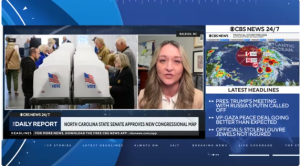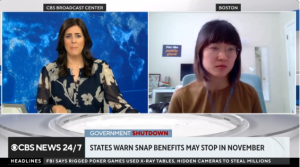The U.S. gross national debt has surpassed $38 trillion for the first time, U.S. Treasury Department data shows.

The country’s mounting debt comes as the government remains closed, disrupting the economy as hundreds of thousands of federal workers go unpaid.
Government shutdowns can boost the national debt because they delay economic activity and postpone fiscal decisions, while pausing federal programs and starting them up again can also increase costs. The Office of Management and Budget estimated that a 2013 U.S. government shutdown cost $2 billion in lost worker productivity.
“Reaching $38 trillion in debt during a government shutdown is the latest troubling sign that lawmakers are not meeting their basic fiscal duties,” Michael A. Peterson, CEO of the Peter G. Peterson Foundation, a nonpartisan nonprofit focused on fiscal policy, said in a statement.
“If it seems like we are adding debt faster than ever, that’s because we are. We passed $37 trillion just two months ago, and the pace we’re on is twice as fast as the rate of growth since 2000,” he added.
The federal deficit is the gap between what the federal government spends each year and what it collects in revenue, while the debt is the total amount it owes over time.
The U.S. debt reached $34 trillion in January 2024, $35 trillion in July 2024 and $36 trillion in November 2024.
The longest shutdown in U.S. history, the 35-day stalemate in 2018, cost the economy $11 billion, largely to a reduction in spending by federal workers, according to the Congressional Budget Office.
In September, 81% of voters surveyed by the Peterson Foundation highlighted the national debt an issue of concern. According to economists, the growing mountain of debt leads to higher interest costs for the U.S. government.
Interest payments on the nation’s debt are forecast to rise from $4 trillion over the past decade to $14 trillion over the next 10 years, curtailing public and private spending in key economic sectors, the Peterson Foundation said.
Rising U.S. debt could also undermine investor confidence in the economy, David Kelly, chief global strategist with J.P. Morgan Asset Management, said in a report earlier this month.
Credit rating agency Moody’s downgraded the U.S. credit rating in May from its top rating of Aaa to Aa1, reflecting investor concerns about the government’s growing debt. The two other major credit rating agencies, Standard & Poor’s and Fitch Ratings, have also lowered the U.S. rating.
Maya MacGuineas, president of the Committee for a Responsible Federal Budget and a prominent voice on the nation’s fiscal policies, also expressed concern at the national debt topping $38 trillion.
“The reality is that we’re becoming distressingly numb to our own dysfunction. We fail to pass budgets, we blow past deadlines, we ignore fiscal safeguards and we haggle over fractions of a budget while leaving the largest drivers untouched,” she said in a statement. “Social Security and Medicare, for example, are just seven years from having their trust funds depleted — and you don’t hear anything from our political leaders on how to avoid such a disaster.”
Impact on consumers
Over time, rising debt hurts consumers by driving up inflation, Kent Smetters, a professor of business economics and public policy at the University of Pennsylvania, told The Associated Press.
“I think a lot of people want to know that their kids and grandkids are going to be in good, decent shape in the future — that they will be able to afford a house,” said Smetters, who served in President George W. Bush’s Treasury Department. “That additional inflation compounds” and erodes consumers’ purchasing power.
The Trump administration says its efforts to curb government spending will put the country on a better fiscal trajectory. From April to September, the nation’s total deficit totaled $468 billion, according to Treasury Department data. In a social media post on Wednesday, Treasury Secretary Scott Bessent said that’s the lowest reading since 2019.
“During his first eight months in office, President Trump has reduced the deficit by $350 billion compared to the same period in 2024 by cutting spending and boosting revenue,” White House spokesman Kush Desai said in a statement, adding that the administration is working to boost economic growth, lower inflation, and reduce waste and fraud in government spending.
Reposted from CBS

